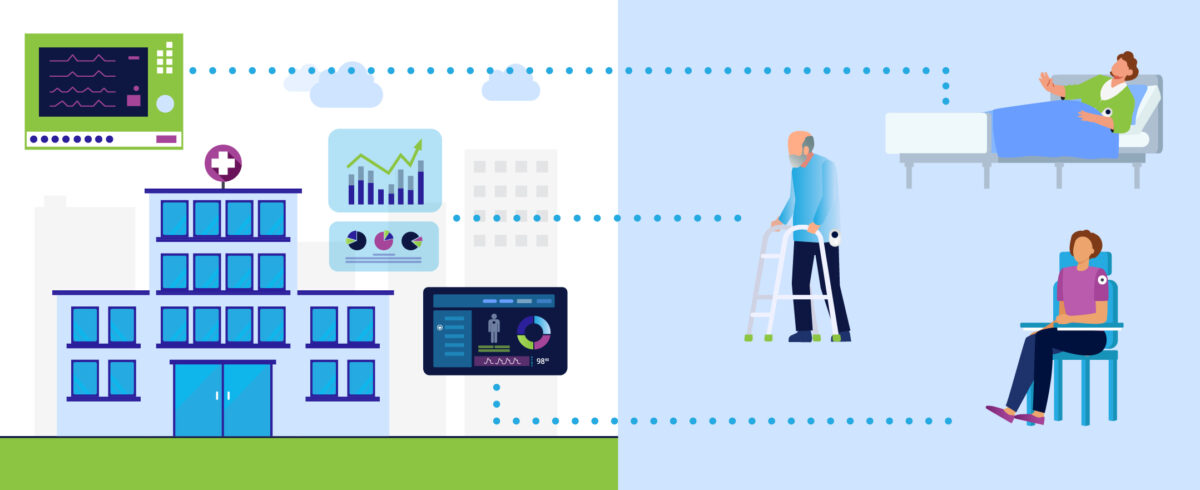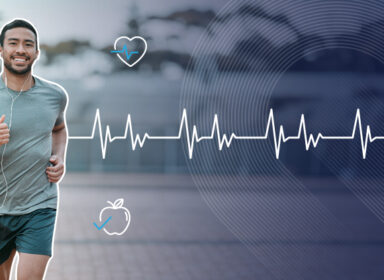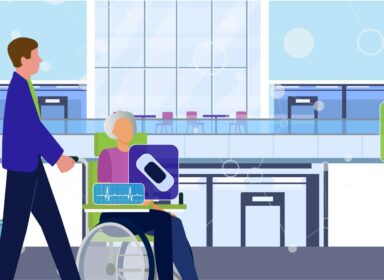Remote patient monitoring (RPM) has become an increasingly popular method of patient care throughout the healthcare industry because of its expansive view into patients’ health, as well as increased affordability and time savings for both provider and patient. Clinicians are recognizing the versatility of this technology, as almost one-third of doctors are utilizing remote patient monitoring.
By collecting and sharing biometric data and patient-reported insights with healthcare providers, RPM can improve chronic care management with increased communication and real-time alerts. Additionally, proactively monitoring patients can also delay or reduce disease progression and costly visits and treatments. This has enabled the healthcare industry to shift from traditional inpatient care methods to a “hospital- to-home” virtual model.
In this blog post, we’ll discuss how remote patient monitoring has enabled key benefits in hospital-to-home care, cover specific scenarios in which RPM can be helpful, and detail tangible examples of how InfoBionic’s innovative MoMe™ ARC Platform has made a significant—and lifesaving—impact on patient care.
Hospital-to-Home Care Enabled by RPM is Beneficial Across Specialties
Remote patient monitoring allows providers the ability to manage both acute and chronic conditions. A significant number of medium- to high-risk patients with chronic conditions are healthy enough to remain at home, yet require ongoing touchpoints to monitor their conditions. RPM technology may prove valuable in the ongoing monitoring of patients with the following conditions:
- High blood pressure
- Diabetes
- Heart conditions
- Chronic obstructive pulmonary disease
- Sleep apnea
- Asthma
- Pregnancy
Scenarios in Which RPM Can Prove Critical
When patients return home after a procedure, their journey isn’t over. In fact, the days and weeks post-discharge can be some of the highest risk times for patients, presenting complications or readmissions. By enabling the doctor to extend visibility beyond the hospital and monitor key health indicators long after discharge, RPM can help mitigate risk for patients and improve healthcare outcomes. In fact, some research shows that remote monitoring can result in a 65% reduction in hospitalization. Following are a few hospital-to-home situations where RPM can make a significant difference in recovery.
- After labor and delivery
Within days of giving birth, some women can experience dangerous blood pressure increases that put them at risk of stroke or a heart attack, and this is a driving factor in both postpartum readmissions and maternal morbidity. Since half of maternal deaths occur in the postpartum period after discharge from the hospital, utilizing RPM can be the difference between life and death. At Boston Medical Center, for example, patients are part of a remote patient monitoring program that proactively identifies patients at risk. By having patients wear cellular-connected blood pressure cuffs to monitor them, care teams are able to proactively intervene before a patient experiences more serious complications.
- After pacemaker surgery
Monitoring the heart health of patients with conditions like arrhythmias, abnormal heartbeats, and heart failure is necessary for patients who have undergone a device implantation, such as a pacemaker. By syncing the transmitter with the pacemaker, data can be collected to detail the heart’s rate and rhythm. The device then transmits this information through a secure platform to the doctor. The doctor is aware of what is happening with the patient in real-time, anytime, no matter where the patient is located. Since patients are monitored regularly through the remote device and providers are able to spot anomalies earlier, patients are more likely to have positive outcomes.
- After orthopedic surgery
Other types of surgeries also benefit from RPM. Healthcare providers at Penn Medicine were able to reduce rehospitalizations by 75% among patients who had hip or knee replacements through the use of a telehealth platform. The program used wearable devices and text messaging to check in with patients at home about their daily activity and pain levels. Closely monitoring patients can reduce recovery time by encouraging proper rehabilitative habits.
Tangible Use Cases of the MoMe™ ARC Platform’s Life-Saving Potential
The value of RPM is not just hypothetical. This technology has made a real difference for real patients. Let’s examine two real-life scenarios where RPM enabled by InfoBionic’s MoMe™ ARC Platform had a life-saving impact.
- Scenario #1
In early April 2021, patient Meckenzie Tinaglia visited the emergency room after experiencing seizure-like events. She was diagnosed at 20 with occasional irregular cardiac rhythms and had received electrocardiogram testing. However, when she became pregnant, her heart began experiencing frequent premature ventricular contraction (PVC). After Meckenzie received medications and underwent an ablation procedure, her patch-based RPM device signaled continued problems, with apparent seizures during sleep due to neurologic misfiring.
Meckenzie received remote cardiac monitoring at Mayo Clinic with InfoBionic’s MoMe™ Kardia monitoring system. After another sleep seizure, her care team used data gleaned from the device to determine she had been experiencing ventricular tachycardia (V-tach) and ventricular fibrillation caused by irregular electrical signals in the heart’s lower chambers that cause the heart to beat faster. V-tach episodes lasting more than a few seconds may be life-threatening and require immediate medical attention.
Without the clarity and resolution of the data generated by the MoMe™ device, the Mayo Clinic team wouldn’t have known about the seriousness of Meckenzie’s condition and that she was going into a fatal rhythm.
- Scenario #2
After a visit to the Mayo Clinic due to a variety of symptoms, patient Dan O’Bryan received an EKG and short-term monitoring before starting a mobile cardiac telemetry test that used the MoMe™ Kardia device to remotely monitor heart rhythms for up to 30 days.
Within one day of using the device to monitor Dan’s condition, his care team received alerts from the system showing not only pauses in his heartbeat—but that his heart had stopped entirely for nine seconds. While Dan didn’t think this was very serious, his doctor asked him to go to the Mayo Clinic Emergency Department where the team quickly sprang into action. Due to the data that the MoMe™ device provided, Dan’s clinicians were able to diagnosis him with a slow heart rate and atrial fibrillation, leading to a pacemaker implant surgery.
Dan’s providers’ ability to receive real-time alerts, log in to the mobile heart monitor, and see heart rate trends in real time proved critical in providing care to Dan, and potentially saved his life.
MoMe™ ARC Platform Makes All the Difference
A reduction in avoidable hospital visits, shorter stays, fewer readmissions, and faster recovery are just some of the many benefits of remote patient monitoring across healthcare specialties. No matter the application, the outcomes of RPM are clear—patients who are monitored with RPM devices have a probability of survival that is nearly two and a half times greater than those without it.
InfoBionic’s MoMe™ ARC Platform is designed to serve as the centerpiece of a provider’s RPM strategy. Convenient and easy to use, the platform fosters adoption among patients of all ages and technological comfort levels. For providers, the platform enables real time, data-driven decision making and more proactive interventions by providing continual access to high quality recording data. Nothing stands between providers and their patient’s information, enabling the kind of agility that is needed to improve healthcare outcomes for everyone.
Contact us to learn how remote patient monitoring has changed hospital-to-home care and how the MoMe™ ARC platform can make a difference for your patients.


